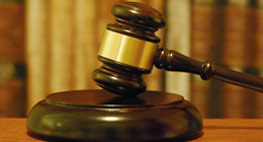Roberts a pivotal vote in the Supreme Court's big opinions
US Legal News
The biggest cases of the Supreme Court term so far have a surprising common thread. On a court with five Republican appointees, the liberal justices have been in the majority in rulings that make workplace discrimination against gay and transgender people illegal, protect young immigrants from deportation and, as of Monday, struck down a Louisiana law that restricted abortion providers.
As surprising, Chief Justice John Roberts, a conservative nominated by President George W. Bush who has led the court for nearly 15 years, has joined his liberal colleagues in all three. Since the retirement of Justice Anthony Kennedy in 2018, Roberts has played a pivotal role in determining how far the court will go in cases where the court's four liberals and four conservatives are closely divided.
Here's a look at where Roberts stood in the abortion, immigration and LGBT cases, his history on the court and what's at stake in coming decisions in which Roberts could play a key role:
On Monday, Roberts joined liberal justices Ruth Bader Ginsburg, Stephen Breyer, Sonia Sotomayor and Elena Kagan in striking down Louisiana's Act 620. The justices ruled that the law requiring doctors who perform abortions to have admitting privileges at nearby hospitals violates the abortion rights the court first announced in the landmark 1973 Roe v. Wade decision.
But Roberts' reason for siding with the liberals had less to do with his feelings on abortion than with his feelings on whether the court should do an abrupt about-face. Four years ago the court's four liberal members and Justice Kennedy struck down a Texas law nearly identical to Louisiana's. At the time, Roberts was a vote in dissent. But with Kennedy's retirement and replacement by conservative Justice Brett Kavanaugh, many conservatives had hoped the result in the Louisiana case would be different. Not so, Roberts wrote: “The result in this case is controlled by our decision four years ago."
Related listings
-
Simple math suggests complex back story at Supreme Court
US Legal News 06/17/2020Organizers of a Michigan ballot drive to prohibit discrimination against gay, lesbian and transgender people said Monday they were evaluating whether to continue following a major victory in the U.S. Supreme Court.Fair and Equal Michigan launched the...
-
Kansas' high court rules for governor on religious services
US Legal News 04/12/2020The Kansas Supreme Court ruled Saturday that a Republican-dominated legislative panel exceeded its authority when it tried to overturn the Democratic governor’s executive order banning religious and funeral services of more than 10 people durin...
-
Supreme Court rejects fast-track review of health care suit
US Legal News 01/22/2020The Supreme Court refused Tuesday to consider a fast-track review of a lawsuit that threatens the Obama-era health care law, making it highly unlikely that the justices would decide the case before the 2020 election.The court denied a request by 20 m...

Victorville CA DUI Lawyers - Drunk Driving Defense Attorney
The outcome of a DUI defense will have a long-term effect on anyone’s life, making the decision to receive legal representation an easy one. The fact is, most people accused of a DUI are first offenders with no criminal background. Whether this is your first run in with the law or you have had previous convictions, you are in need of a DUI defense attorney.
If you fail a sobriety test or have a blood alcohol level above 0.8%, you are considered to be driving under the influence in which you will be arrested. During this time you will be read your Miranda rights and it is crucial to exercise your right to remain silent. As they say, “anything you say can and will be held against you in court.” The courtroom takes no mercy on drunk drivers and any statement you make during your arrest will only damage your case.
The charges you are facing for a DUI range from fines, a 12-month suspension on your license and worst-case scenario, prison time. Your attorney will be able to analyze your situation to decide the best way to go about your case.
Our Victorville CA DUI defense attorneys know the tricky ways to challenge all of the DUI tests and know how to claim improper collection of evidence. We will be able to negotiate on your behalf and free you from charges and help you keep your drivers license. The DUI process can last up to several months, we can make this process easier on you.




